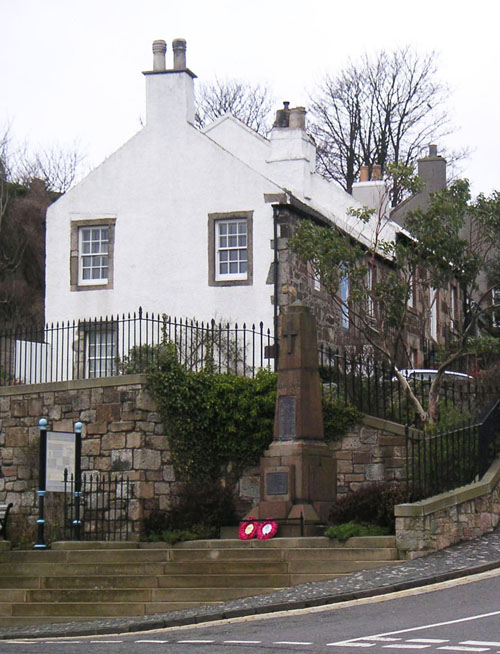A Village Remembers

The stories behind the names on the North Queensferry War Memorial
and the fallen who were omitted.
North Queensferry War Memorial Archive
Compiled in 2016
by North Queensferry Heritage Trust.
Editor – J. Colin Bain
This archive is the result of a decision in 2014 by some members of North Queensferry Heritage Trust to seek to discover the stories behind the names on our village War Memorial.
By this time, all living memory of those in the First World War was lost and increasingly few were left, who had direct memory of the participants in the Second World War.
This has inevitably complicated the task of research.
As well as this on-line archive, a version intended for publication as a booklet (80 pages of A5) can be down loaded HERE
(You may be able to print this as a booklet on 20 sheets of A4 paper – please see your printer instructions for details.)
We have been able to analyse the 1911 Census and find that the total population of the South part of the parish (village proper) was 953, of whom 461 (48.5%) were male and 492 (51.5%) female.
The males between the ages of 10 and 50 were 299. The Northern portion (Jamestown etc.) had a population of 380, of whom 226 (59.5%) were male and 154 (40.5%) female.
There were 159 males there aged between 10 and 50.
From these figures we estimate that there were some 450 men of military age in the village prior to the start of the First World War.
There are 28 names from the First World War on the memorial and while not all of them (as we shall see) had actually been living here in the immediate pre-war period, this represents a significant proportion of the population.
There was also at least one casualty who was not named on the memorial.
Thus some 6.2 percent of the “available” manpower of the village (and a very much bigger proportion of the number actually serving) was killed.
This compares with the national figure of around 736,000 killed from a male population of perhaps 22 million (roughly 3.3%).
This does not take account of the fact that perhaps only some 15 million men were of military age, which would make the figure almost 5 percent nationally.
In fact some 6 million actually served, with 11.5% of those in uniform killed.
We are unable to produce an authoritative number of those from the village who actually served, since unlike in many other places, no list seems to have been drawn up at the time.
Local figures for the Second World War are not so readily available, but the impact on the village is considered to have been less, with ten names on the Memorial, although nationally, due in part to civilian casualties, the overall number of deaths was even higher.
It may come as surprise, to find the modern village actually has a slightly smaller total population than was the case pre-First World War, but is now less densely packed, with smaller households.
